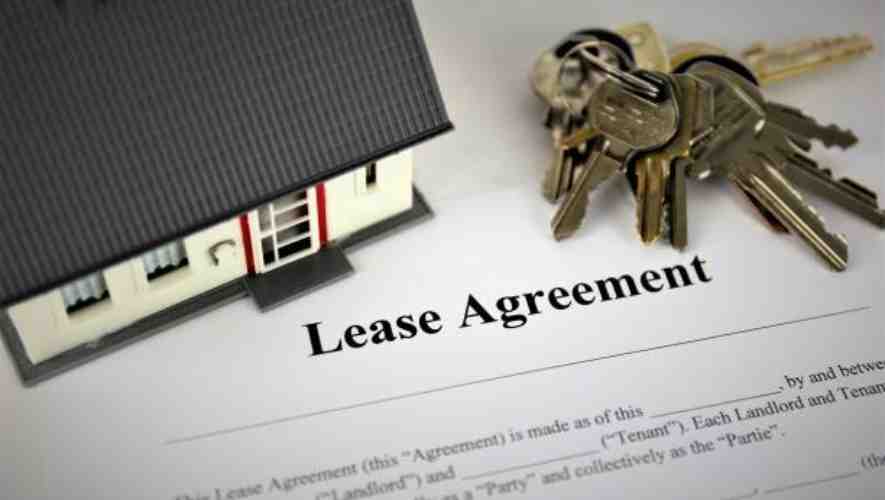Moving out of a rented space often comes with a mix of emotions and responsibilities. One key responsibility is determining how much notice you need to give your landlord before vacating the premises. This can be a source of confusion and stress, particularly for those who are navigating the process for the first time. The question arises from a need to balance personal plans and legal or contractual obligations, ensuring a smooth transition for both tenant and landlord.
How Much of a Notice to Give When Moving Out? Generally, a 30-day notice is standard when planning to move out of a rental property. However, this can vary based on your lease agreement and local laws. Providing ample notice not only aligns with most rental agreements but also fosters positive relationships with landlords.
Knowing the right amount of notice to give is crucial for a seamless move. This blog will guide you through understanding the importance of giving the correct notice, the potential legal implications of failing to do so, and practical tips for communicating with your landlord. By the end of this article, you’ll be equipped with the knowledge to navigate this process smoothly, ensuring that you leave on good terms and with your security deposit in hand. This serves as your roadmap to moving out with confidence and clarity.
Understanding Lease Agreements and Legal Requirements much of a Notice to Give When Moving Out

Lease agreements are pivotal documents that establish the legal and financial relationship between landlords and tenants.
These agreements outline the terms and conditions under which a tenant can occupy a property, including the duration of the lease, the rent amount, security deposit requirements, and rules regarding the use of the property.
Understanding the intricacies of lease agreements is crucial for both parties to ensure a harmonious rental experience.
This understanding aids in preventing disputes and ensures that both landlords and tenants are aware of their rights and responsibilities.
Lease agreements must comply with local, state, and federal laws. These laws can cover a wide range of issues, including but not limited to, anti-discrimination, habitability standards, rent control, and tenant privacy.
Landlords must ensure that their lease agreements do not violate any legal statutes, and tenants should be aware of these laws to protect their rights.
For instance, a lease agreement cannot waive the tenant’s right to a habitable living environment or the right to privacy.
Furthermore, certain jurisdictions may require specific disclosures to be included in the lease, such as information about lead-based paint or the history of flooding in the property.
A thorough understanding of lease agreements and the legal framework surrounding them helps prevent legal disputes.
It is advisable for both landlords and tenants to consult legal counsel or a real estate professional when drafting or signing a lease agreement to ensure it complies with all applicable laws and adequately protects their interests.
The Importance of Notice When Moving Out
Providing proper notice before moving out is a critical component of the tenant-landlord relationship, governed by the lease agreement and local laws.
Notice requirements ensure that landlords have sufficient time to find a new tenant and prepare the property for reoccupation, thereby minimising financial loss.
Conversely, for tenants, giving notice in accordance with the lease terms and legal requirements is crucial to avoid penalties, such as forfeiting the security deposit or being responsible for rent after moving out.
The required notice period can vary significantly based on the jurisdiction and the terms of the lease agreement.
Typically, a 30-day notice is standard for month-to-month rental agreements, but this can range from as little as a week to as much as 60 days or more for fixed-term leases.
The notice must usually be provided in writing and include the intended move-out date, thereby creating a formal record of the tenant’s intention to vacate the property.
The Standard Notice Period Give

The Purpose and Importance of Notice Periods
Notice periods are not merely a procedural formality but a critical component that supports the structural and operational integrity of an organisation.
For employers, this period is instrumental in finding a suitable replacement or redistributing the departing employee’s duties among existing team members, thereby minimising disruption to workflows and productivity.
On the other hand, for employees, it represents a period to conclude their duties responsibly, transfer knowledge to successors or teammates, and leave on a positive note, preserving professional relationships.
Additionally, this period allows both parties to address and finalise administrative tasks, such as the settlement of dues, return of company property, and completion of exit formalities, ensuring a clean and orderly transition.
Determining the Standard Notice Period
The standard notice period varies significantly, influenced by factors such as local labour laws, industry practices, contractual agreements, and the employee’s role within the organisation.
Typically, a notice period can range from two weeks to three months, with longer periods often required for senior or highly specialised positions due to the complexity of their roles and the challenges in finding suitable replacements.
Employers and employees must be aware of the legal and contractual stipulations governing notice periods in their specific context to avoid potential conflicts or misunderstandings.
It’s also common for notice period durations to be negotiated at the time of hiring, reflecting the level of commitment and expectations from both sides.
Managing Transitions During Notice Periods
Effectively managing the notice period is crucial for a smooth transition. This involves clear communication strategies, detailed handover processes, and sometimes, the involvement of human resources to mediate and support the transition process.
Employers should use this time to assess internal talent or look for external candidates, ensuring that the departing employee’s responsibilities are adequately covered.
Meanwhile, employees are expected to maintain their professionalism, completing outstanding tasks, and assisting in the training of replacements if needed.
A well-managed notice period not only minimises operational disruptions but also reinforces a culture of respect and professionalism.
Exceptions and Special Circumstances much of a Notice to Give When Moving Out

When it comes to moving out of a rental property, most lease agreements clearly specify the amount of notice required—typically 30 to 60 days. However, life is unpredictable, and sometimes exceptional circumstances can necessitate an early departure.
Recognizing these nuances, it is crucial for tenants to be aware of the potential exceptions and special circumstances that might allow for deviation from the standard notice period.
Firstly, legal exceptions play a significant role. In some jurisdictions, laws are in place to protect tenants who must move out prematurely due to specific reasons such as military deployment, health issues, or unsafe living conditions.
It’s imperative for tenants to familiarise themselves with local laws to understand if their situation qualifies for such an exemption.
For instance, the Servicemembers Civil Relief Act (SCRA) in the United States allows military personnel to break a lease under certain conditions without penalty.
Secondly, personal emergencies, including sudden job relocations, severe health issues, or family emergencies, might not always be covered by law but could still constitute valid reasons for breaking a lease.
In these cases, open communication with the landlord is key. Providing documentation and explaining the situation honestly can sometimes persuade landlords to make exceptions or negotiate terms that minimise penalties.
Furthermore, the condition of the property itself can be a special circumstance. Issues like unresolved repairs, hazardous conditions, or violations of health and safety standards might provide legal grounds for a tenant to move out without adhering to the standard notice period.
However, tenants should document these issues meticulously and, where possible, communicate with their landlords before making a decision to move out prematurely.
Conclusion
Giving the correct notice before moving out is more than just a legal requirement; it’s a courtesy that can significantly affect your rental history and future tenancy opportunities. The ideal notice period is often stipulated in your lease, but a 30-day notice is a common practice. This duration respects both the tenant’s and landlord’s time to make necessary arrangements.
In conclusion, while the process of moving out can be daunting, understanding and adhering to the correct notice period can alleviate much of the stress involved. Remember, clear communication with your landlord throughout your tenancy, not just when planning to leave, can make the process smoother for everyone involved. It’s not just about following the rules; it’s about building and maintaining a good relationship with your landlord and ensuring a positive reference for future rentals. Always check your lease agreement and local laws to confirm the notice period required and plan accordingly. This attention to detail will serve you well in your current and future housing endeavours.


